*NURSING > QUESTIONS & ANSWERS > ATI NUTRITION TEST REVIEW A and B Graded A, Latest Questions and Answers with Explanations, All Corr (All)
ATI NUTRITION TEST REVIEW A and B Graded A, Latest Questions and Answers with Explanations, All Correct Study Guide, Download to Score A 1. A nurse is performing a comprehensive nutritional assessment for a client. After reviewing the client's laboratory results, which of the following findings should the nurse report to the provider? a. WBC count 6,000/mm3 b. Sodium 139 mEq/L c. Prealbumin 8 mg/dL d. Thyroxine (T4) 9.2 mcg/dl 2. A client reports constipation during a routine checkup. The client was previously encouraged to increase their intake of mineral supplements. Which of the following minerals should the nurse identify as the possible cause of the constipation? a. Phosphorus b. Potassium c. Magnesium d. Calcium 3. A nurse is providing discharge teaching to a client who has Parkinson's disease and a prescription for levodopa-carbidopa. Which of the following foods should the nurse instruct the client to consume with the medication? a. 6 oz Greek yogurt b. 1 oz cheddar cheese c. Six peanut butter crackers d. One slice wheat toast 4. A nurse is providing nutritional teaching to the guardians of a 2-year-old toddler. Which of the following snack foods should the nurse recommend including in the toddler's diet? a. 1 cup of fruit gel bites b. 1 cup of yogurt c. ½ of a hot dog d. ½ of a peanut butter and jelly sandwich 5. A nurse is initiating an enteral feeding for a client who has chronic bronchitis. Which of the following types of formula should the nurse anticipate administering to the client? a. Low protein b. High carbohydrate c. High calorie d. Low fat 6. A nurse is assessing a client who has end-stage kidney disease {ESKD). Which of the following dietary habits increases the client's risk for dysrhythmias? a. Consuming a diet low in fat b. Eating a diet rich in potassium c. Consuming a diet rich in protein d. Eating a diet deficient in iron 7. A nurse is reviewing the laboratory results of a client who is receiving continuous total parenteral nutrition. Which of the following results should the nurse report to the provider? a. Glucose 238 mg/dl b. Potassium 4.7 mEq/L c. Calcium 9.8 mg/dl d. Sodium 140 mEq/L 8. A nurse is providing information regarding breastfeeding to the parents of a newborn. Which of the following statements should the nurse make? a. "Breast milk is nutritionally complete for an infant up to 6 months of age." b. "Iron-fortified infant formulas are nutritionally inferior to breast milk." c. "Supplemental water is needed to provide an adequate fluid intake." ‘ d. "Use whole cow's milk if you discontinue breastfeeding in the first year." 9. A nurse is caring for a client who is receiving total parenteral nutrition (TPN). The current bag ofTPN is empty and a new bag is not available on the unit. Which of the following solutions should the nurse infuse until a new bag of TPN is available? a. Dextrose 10% in water b. 0.45% sodium chloride c. Dextrose 5% in lactated Ringer's d. 0.9% sodium chloride 10. A nurse is caring for a client who is being treated for cancer using chemotherapy. Which of the following interventions should the nurse suggest to aid in management of treatment-related changes in taste? a. Use plastic utensils. b. Limit fluids with meals. c. Serve meals while they are hot. d. Eat bland, unseasoned foods. 11. A nurse is caring for a client who has age-related macular degeneration (AMD) and asks the nurse if there are any nutritional changes to consider. Which of the following responses should the nurse make? a. "Use soy products as much as possible." b. "Add niacin-rich foods to your diet." c. "Increase dietary intake of lutein." d. "Consume foods with a high glycemic index." 12. A nurse is teaching a client who has a BMI of 22 about dietary recommendations during pregnancy. Which of the following statements by the client indicates an understanding of the teaching? a. "I should avoid a vegetarian diet." b. "I should decrease my intake of protein." c. "I should increase my daily intake by 600 calories." d. "I should plan to gain a total of 25 to 35 pounds." 13. A nurse is admitting a client who has had a fever and diarrhea for the past 3 days. Which of the following findings should indicate to the nurse the client is dehydrated? a. Distended neck veins b. Orthostatic hypotension c. Weight gain d. Peripheral edema 14. A nurse is caring for a client who is receiving intermittent enteral feedings every 4 hr via an NG tube. Which of the following actions should the nurse take to reduce the risk for aspiration? a. Check placement of the NG tube once per day. b. Place the client in a semi-Fowler's position. c. Flush the tubing with 20 ml of water prior to each feeding. d. Administer the formula chilled. 15. A nurse is reviewing the laboratory data of four clients. The nurse should identify that which of the following clients is experiencing fluid overload? a. A client who has an albumin level of 5.5 g/dL b. A client who has a urine specific gravity of 1.035 c. A client who has a Hct of 55% d. A client who has a sodium level of 130 mEq/L 16. A nurse is reviewing the laboratory results of a client who has a pressure injury. Which of the following findings should indicate to the nurse that the client is at risk for impaired wound healing? a. Hgb 15 g/dl b. Albumin 3.0 g/dl c. Prothrombin time 11.5 seconds d. WBC 6,000/mm3 17. A nurse is updating a plan of care for a client who is receiving intermittent enteral feedings and is experiencing diarrhea. Which of the following interventions should the nurse include in the plan? a. Discard the client's opened cans of formula within 48 hr. b. Administer the client's formula cold. c. Feed the client in small, frequent volumes. d. Consider a low-calorie formula for the client. 18. A nurse is caring for a client who has anemia and a new prescription for an iron supplement. The nurse should recommend the client consume the supplement with which of the following beverages to increase absorption? a. Protein shake b. Skim milk c. Tomato juice d. Green tea 19. A nurse is caring for a client who is receiving radiation therapy. The client reports a metallic taste in his mouth while eating. Which of the following actions should the nurse take? (Select all that apply.) a. Provide three large meals daily. b. Offer citrus fruits. c. Suggest pickles as a snack. d. Rinse silverware prior to eating. e. Gargle with mouthwash. 20. A nurse is caring for a client who has diabetes mellitus and reports feeling dizzy, weak, and shaky. Which of the following is the priority action by the nurse? a. Offer the client 180 ml (6 oz) of orange juice. b. Document the client's intake from the most recent meal. c. Teach the client manifestations of hypoglycemia. d. Check the client's blood glucose level. 21. A nurse is providing discharge teaching to a client who has a new ileostomy. Which of the following dietary guidelines should the nurse include in the teaching? a. Plan to reduce dietary salt intake. b. Consume limited amounts of pasta products. c. Prepare meals on a schedule. d. Reduce dietary B12. 22. A nurse is providing teaching to a client who is currently experiencing an exacerbation of Crohn's disease. Which of the following statements by the client indicates an understanding of dietary practices during acute episodes? a. "I will take a fiber supplement daily." b. "I will increase my fat intake." c. "I will follow a high-protein diet." d. "I will consume three large meals throughout the day." 23. A nurse is creating a plan of care for a client who has anorexia nervosa. Which of the following interventions should the nurse include in the plan? a. Weigh the client once weekly at the same time of the day. b. Stay with the client for 30 min after meals. c. Allow the client to schedule mealtimes. d. Assign privileges based on direct weight gain. 24. A nurse is caring for a group of clients. A client who has which of the following conditions has an increased protein requirement? a. Pressure injury b. Early-stage renal disease c. Coronary artery disease d. Peptic ulcer 25. A nurse is assessing a client who experienced a 5% weight loss in the past 30 days. Which of the following findings should the nurse identify as an indication of malnutrition? a. Moist skin b. Ankle edema c. Hyperreflexia d. Dilated pupils 26. A nurse is admitting a client who has diabetic ketoacidosis. Which of the following findings should the nurse expect? a. Tremors b. Increased urination c. Heart palpitations d. Sweating 27. A nurse in an emergency department is reviewing the laboratory report for a client who is confused and reports nausea and abdominal cramping. The nurse should expect the client's laboratory results to indicate a dietary deficiency of which of the following minerals? a. Sodium b. Phosphorus c. Potassium d. Chloride 28. A nurse in an antepartum clinic is teaching a client about nutritional recommendations during pregnancy. Which of the following client statements indicates an understanding of the teaching? a. "I should take a daily iron supplement during my pregnancy." b. "I should decrease protein intake during my pregnancy." c. "I should plan to gain at least 50 pounds during my pregnancy." d. "I should increase my fat intake during the first trimester of my pregnancy." 29. A nurse is providing teaching regarding diet modifications to a client who is at a high risk for cardiovascular disease. The client is accustomed to traditional Mexican foods and wants to continue to include them in her diet. Which of the following recommendations should the nurse give the client? a. Use canola oil instead of lard for frying. b. Use soy milk instead of cow's milk. c. Use vegetables in salads rather than in soups. d. Limit ground beef intake to 8 oz per day. 30. A nurse is planning discharge teaching for a client who is postoperative following placement of a colostomy. Which of the following statements should the nurse plan to include? a. "Resume a regular diet by 4 weeks after surgery." b. "Add high-fiber foods to your diet." c. "Increase your intake of foods containing pectin." d. "Drink 4 to 6 cups of water per day." 31. A nurse is caring for a client who is prescribed captopril. The nurse should recognize that which of the following foods could cause a potential medication interaction? a. Watermelon b. Cantaloupe c. Lettuce d. Carrots 32. A nurse in a clinic is reviewing the laboratory findings of a client who has type 2 diabetes mellitus. Which of the following findings indicates the client's plan of care is effective? a. Serum creatinine 1.5 mg/dl b. BUN 25 mg/dl c. HbA1c 6.5% d. Pre-meal blood glucose 145 mg/dl 33. A nurse is planning dietary interventions for a client who is prescribed external radiation for laryngeal cancer. The client reports manifestations of stomatitis. Which of the following interventions should the nurse include? a. Provide meals at room temperature. b. Offer the client additional seasonings for food. c. Instruct the client to eat citrus fruits at the beginning of the meal. d. Encourage the client to drink warm tomato juice in place of high-protein supplements 34. A nurse is teaching an older adult client about nutritional recommendations. Which of the following statements should the nurse make? a. "You should increase your daily calorie intake." b. "You should increase your daily protein intake." c. "You receive an adequate amount of calcium from your diet, so a supplement is not recommended." d. "You receive an adequate amount of vitamin D from sun exposure, so it is not necessary to take a supplement." 35. A nurse is providing dietary teaching about increased zinc intake for a client who has chronic skin ulcers of the lower extremities. Which of the following foods should the nurse recommend as containing the highest amount of zinc? a. 1 cup apple slices b. 4 oz low-fat cottage cheese c. 4 oz ground beef patty d. 1 cup raw spinach 36. A nurse is assessing the meal pattern of a client who has diverticular disease and a prescription for a high-fiber diet. Which of the following food choices by the client contains the most fiber? a. 1 medium banana b. ½ cup oatmeal c. 1 medium apple with skin d. ½ cup bran cereal 37. A nurse is providing teaching to a client who reports nausea during pregnancy. Which of the following statements by the client indicates an understanding of the teaching? a. "I should drink liquids with meals." b. "I will eat dry cereal before I get out of bed." c. "I will increase the fat content in my diet." d. "I should drink a cup of hot tea between meals." 38. A nurse is providing teaching about cancer prevention to a group of clients. Which of the following client statements indicates an understanding of the teaching? a. "I will eat five servings of fruits and vegetables each day." b. "I should limit my alcohol intake to a maximum of three drinks daily." c. "I should eat more refined wheat and oat products." d. "I will eat processed meats to achieve my required protein intake." 39. A nurse is providing dietary teaching about reducing the risk of infection to a client who has cancer and is receiving chemotherapy. Which of the following client statements indicates an understanding of the teaching? a. “I will thaw my food at room temperature." b. "I will use leftovers within 24 hours." c. "I should use home-canned goods within 2 years of canning." d. "I should heat my food to at least 120 degrees Fahrenheit." 40. A nurse is providing dietary teaching to a client who has celiac disease. Which of the following statements by the client indicates an understanding of the teaching? a. "I can return to my normal diet after I follow this diet for 1 month." b. "I can have tapioca pudding for dessert." c. "I will choose canned soups that do not contain meat products." d. "I will eat my sandwiches on whole wheat bread." 41. A nurse is teaching a client who is preparing for bowel surgery about a low- residue diet. Which of the following food choices by the client indicates an understanding of the teaching? a. Three slices of bacon and oatmeal toast b. Granola with raisins and strawberries c. Whole wheat French toast with blueberries and maple syrup d. Two poached eggs and a banana 42. A nurse is caring for a client who develops diarrhea while receiving a continuous enteral tube feeding. Which of the following actions should the nurse take? a. Provide a low-protein formula. b. Elevate the head of the bed to 30° . c. Switch to intermittent feedings. d. Warm the formula to room temperature 43. A nurse is caring for a client who is receiving continuous enteral feedings via an NG tube. The nurse notices that the tube feeding has stopped infusing. Which of the following actions is the nurse's priority? a. Change the formula. b. Change the tube. c. Notify the provider. d. Flush the tube with warm water 44. A nurse is conducting dietary teaching for a group for clients who are trying to become pregnant. Which of the following food items should the nurse include as containing the highest amount of folate? a. ½ cup chickpeas b. 3.5 oz chicken liver c. 1 medium orange d. 1 slice white bread 45. A nurse is caring for a client who has cirrhosis and ascites. Which of the following dietary instructions should the nurse provide for this client? a. "Decrease your sodium intake to 1 to 2 grams per day." b. "Increase your daily fluid intake to 3 liters per day." c. "Consume 0.5 grams per kilogram of protein per day." d. "Eliminate foods that contain vitamin K." 46. A nurse is teaching a client who has a prescription for ferrous sulfate about food interactions. Which of the following statements indicates that the client understands the teaching? a. "I can take this medication with juice." b. "I can take this medication with my eggs at breakfast." c. "I will drink low-fat milk when taking this medication." d. "I will take this medication with my coffee." 47. A nurse is caring for a client who is receiving total parenteral nutrition (TPN). Which of the following laboratory findings indicates that the TPN therapy is effective? a. Calcium 8 mg/ml b. Hemoglobin 9 g/dl c. Prealbumin 30 mg/dL d. Cholesterol 140 mg/dl 48. A nurse is providing nutritional teaching to a client who reports wanting to lose weight. The nurse should identify that which of the following client statements indicates an understanding of the teaching? a. "I will taste my foods while I am cooking." b. "I will exclude breads and pastries from my diet." c. "I will make a list before I go grocery shopping." d. "I will skip lunch if I am too busy to have something healthy."
Document Content and Description Below
ATI NUTRITION TEST REVIEW A and B Graded A, Latest Questions and Answers with Explanations, All Correct Study Guide, Download to Score A 1. A nurse is performing a comprehensive nutritional assessm... ent for a client. After reviewing the client's laboratory results, which of the following findings should the nurse report to the provider? a. WBC count 6,000/mm3 b. Sodium 139 mEq/L c. Prealbumin 8 mg/dL d. Thyroxine (T4) 9.2 mcg/dl 2. A client reports constipation during a routine checkup. The client was previously encouraged to increase their intake of mineral supplements. Which of the following minerals should the nurse identify as the possible cause of the constipation? a. Phosphorus b. Potassium c. Magnesium d. Calcium 3. A nurse is providing discharge teaching to a client who has Parkinson's disease and a prescription for levodopa-carbidopa. Which of the following foods should the nurse instruct the client to consume with the medication? a. 6 oz Greek yogurt b. 1 oz cheddar cheese c. Six peanut butter crackers d. One slice wheat toast 4. A nurse is providing nutritional teaching to the guardians of a 2-year-old toddler. Which of the following snack foods should the nurse recommend including in the toddler's diet? a. 1 cup of fruit gel bites b. 1 cup of yogurt c. ½ of a hot dog d. ½ of a peanut butter and jelly sandwich 5. A nurse is initiating an enteral feeding for a client who has chronic bronchitis. Which of the following types of formula should the nurse anticipate administering to the client? a. Low protein b. High carbohydrate c. High calorie d. Low fat 6. A nurse is assessing a client who has end-stage kidney disease {ESKD). Which of the following dietary habits increases the client's risk for dysrhythmias? a. Consuming a diet low in fat b. Eating a diet rich in potassium c. Consuming a diet rich in protein d. Eating a diet deficient in iron 7. A nurse is reviewing the laboratory results of a client who is receiving continuous total parenteral nutrition. Which of the following results should the nurse report to the provider? a. Glucose 238 mg/dl b. Potassium 4.7 mEq/L c. Calcium 9.8 mg/dl d. Sodium 140 mEq/L 8. A nurse is providing information regarding breastfeeding to the parents of a newborn. Which of the following statements should the nurse make? a. "Breast milk is nutritionally complete for an infant up to 6 months of age." b. "Iron-fortified infant formulas are nutritionally inferior to breast milk." c. "Supplemental water is needed to provide an adequate fluid intake." ‘ d. "Use whole cow's milk if you discontinue breastfeeding in the first year." 9. A nurse is caring for a client who is receiving total parenteral nutrition (TPN). The current bag ofTPN is empty and a new bag is not available on the unit. Which of the following solutions should the nurse infuse until a new bag of TPN is available? a. Dextrose 10% in water b. 0.45% sodium chloride c. Dextrose 5% in lactated Ringer's d. 0.9% sodium chloride 10. A nurse is caring for a client who is being treated for cancer using chemotherapy. Which of the following interventions should the nurse suggest to aid in management of treatment-related changes in taste? a. Use plastic utensils. b. Limit fluids with meals. c. Serve meals while they are hot. d. Eat bland, unseasoned foods. 11. A nurse is caring for a client who has age-related macular degeneration (AMD) and asks the nurse if there are any nutritional changes to consider. Which of the following responses should the nurse make? a. "Use soy products as much as possible." b. "Add niacin-rich foods to your diet." c. "Increase dietary intake of lutein." d. "Consume foods with a high glycemic index." 12. A nurse is teaching a client who has a BMI of 22 about dietary recommendations during pregnancy. Which of the following statements by the client indicates an understanding of the teaching? a. "I should avoid a vegetarian diet." b. "I should decrease my intake of protein." c. "I should increase my daily intake by 600 calories." d. "I should plan to gain a total of 25 to 35 pounds." 13. A nurse is admitting a client who has had a fever and diarrhea for the past 3 days. Which of the following findings should indicate to the nurse the client is dehydrated? a. Distended neck veins b. Orthostatic hypotension c. Weight gain d. Peripheral edema 14. A nurse is caring for a client who is receiving intermittent enteral feedings every 4 hr via an NG tube. Which of the following actions should the nurse take to reduce the risk for aspiration? a. Check placement of the NG tube once per day. b. Place the client in a semi-Fowler's position. c. Flush the tubing with 20 ml of water prior to each feeding. d. Administer the formula chilled. 15. A nurse is reviewing the laboratory data of four clients. The nurse should identify that which of the following clients is experiencing fluid overload? a. A client who has an albumin level of 5.5 g/dL b. A client who has a urine specific gravity of 1.035 c. A client who has a Hct of 55% d. A client who has a sodium level of 130 mEq/L 16. A nurse is reviewing the laboratory results of a client who has a pressure injury. Which of the following findings should indicate to the nurse that the client is at risk for impaired wound healing? a. Hgb 15 g/dl b. Albumin 3.0 g/dl c. Prothrombin time 11.5 seconds d. WBC 6,000/mm3 17. A nurse is updating a plan of care for a client who is receiving intermittent enteral feedings and is experiencing diarrhea. Which of the following interventions should the nurse include in the plan? a. Discard the client's opened cans of formula within 48 hr. b. Administer the client's formula cold. c. Feed the client in small, frequent volumes. d. Consider a low-calorie formula for the client. 18. A nurse is caring for a client who has anemia and a new prescription for an iron supplement. The nurse should recommend the client consume the supplement with which of the following beverages to increase absorption? a. Protein shake b. Skim milk c. Tomato juice d. Green tea 19. A nurse is caring for a client who is receiving radiation therapy. The client reports a metallic taste in his mouth while eating. Which of the following actions should the nurse take? (Select all that apply.) a. Provide three large meals daily. b. Offer citrus fruits. c. Suggest pickles as a snack. d. Rinse silverware prior to eating. e. Gargle with mouthwash. 20. A nurse is caring for a client who has diabetes mellitus and reports feeling dizzy, weak, and shaky. Which of the following is the priority action by the nurse? a. Offer the client 180 ml (6 oz) of orange juice. b. Document the client's intake from the most recent meal. c. Teach the client manifestations of hypoglycemia. d. Check the client's blood glucose level. 21. A nurse is providing discharge teaching to a client who has a new ileostomy. Which of the following dietary guidelines should the nurse include in the teaching? a. Plan to reduce dietary salt intake. b. Consume limited amounts of pasta products. c. Prepare meals on a schedule. d. Reduce dietary B12. 22. A nurse is providing teaching to a client who is currently experiencing an exacerbation of Crohn's disease. Which of the following statements by the client indicates an understanding of dietary practices during acute episodes? a. "I will take a fiber supplement daily." b. "I will increase my fat intake." c. "I will follow a high-protein diet." d. "I will consume three large meals throughout the day." 23. A nurse is creating a plan of care for a client who has anorexia nervosa. Which of the following interventions should the nurse include in the plan? a. Weigh the client once weekly at the same time of the day. b. Stay with the client for 30 min after meals. c. Allow the client to schedule mealtimes. d. Assign privileges based on direct weight gain. 24. A nurse is caring for a group of clients. A client who has which of the following conditions has an increased protein requirement? a. Pressure injury b. Early-stage renal disease c. Coronary artery disease d. Peptic ulcer 25. A nurse is assessing a client who experienced a 5% weight loss in the past 30 days. Which of the following findings should the nurse identify as an indication of malnutrition? a. Moist skin b. Ankle edema c. Hyperreflexia d. Dilated pupils 26. A nurse is admitting a client who has diabetic ketoacidosis. Which of the following findings should the nurse expect? a. Tremors b. Increased urination c. Heart palpitations d. Sweating 27. A nurse in an emergency department is reviewing the laboratory report for a client who is confused and reports nausea and abdominal cramping. The nurse should expect the client's laboratory results to indicate a dietary deficiency of which of the following minerals? a. Sodium b. Phosphorus c. Potassium d. Chloride 28. A nurse in an antepartum clinic is teaching a client about nutritional recommendations during pregnancy. Which of the following client statements indicates an understanding of the teaching? a. "I should take a daily iron supplement during my pregnancy." b. "I should decrease protein intake during my pregnancy." c. "I should plan to gain at least 50 pounds during my pregnancy." d. "I should increase my fat intake during the first trimester of my pregnancy." 29. A nurse is providing teaching regarding diet modifications to a client who is at a high risk for cardiovascular disease. The client is accustomed to traditional Mexican foods and wants to continue to include them in her diet. Which of the following recommendations should the nurse give the client? a. Use canola oil instead of lard for frying. b. Use soy milk instead of cow's milk. c. Use vegetables in salads rather than in soups. d. Limit ground beef intake to 8 oz per day. 30. A nurse is planning discharge teaching for a client who is postoperative following placement of a colostomy. Which of the following statements should the nurse plan to include? a. "Resume a regular diet by 4 weeks after surgery." b. "Add high-fiber foods to your diet." c. "Increase your intake of foods containing pectin." d. "Drink 4 to 6 cups of water per day." 31. A nurse is caring for a client who is prescribed captopril. The nurse should recognize that which of the following foods could cause a potential medication interaction? a. Watermelon b. Cantaloupe c. Lettuce d. Carrots 32. A nurse in a clinic is reviewing the laboratory findings of a client who has type 2 diabetes mellitus. Which of the following findings indicates the client's plan of care is effective? a. Serum creatinine 1.5 mg/dl b. BUN 25 mg/dl c. HbA1c 6.5% d. Pre-meal blood glucose 145 mg/dl 33. A nurse is planning dietary interventions for a client who is prescribed external radiation for laryngeal cancer. The client reports manifestations of stomatitis. Which of the following interventions should the nurse include? a. Provide meals at room temperature. b. Offer the client additional seasonings for food. c. Instruct the client to eat citrus fruits at the beginning of the meal. d. Encourage the client to drink warm tomato juice in place of high-protein supplements 34. A nurse is teaching an older adult client about nutritional recommendations. Which of the following statements should the nurse make? a. "You should increase your daily calorie intake." b. "You should increase your daily protein intake." c. "You receive an adequate amount of calcium from your diet, so a supplement is not recommended." d. "You receive an adequate amount of vitamin D from sun exposure, so it is not necessary to take a supplement." 35. A nurse is providing dietary teaching about increased zinc intake for a client who has chronic skin ulcers of the lower extremities. Which of the following foods should the nurse recommend as containing the highest amount of zinc? a. 1 cup apple slices b. 4 oz low-fat cottage cheese c. 4 oz ground beef patty d. 1 cup raw spinach 36. A nurse is assessing the meal pattern of a client who has diverticular disease and a prescription for a high-fiber diet. Which of the following food choices by the client contains the most fiber? a. 1 medium banana b. ½ cup oatmeal c. 1 medium apple with skin d. ½ cup bran cereal 37. A nurse is providing teaching to a client who reports nausea during pregnancy. Which of the following statements by the client indicates an understanding of the teaching? a. "I should drink liquids with meals." b. "I will eat dry cereal before I get out of bed." c. "I will increase the fat content in my diet." d. "I should drink a cup of hot tea between meals." 38. A nurse is providing teaching about cancer prevention to a group of clients. Which of the following client statements indicates an understanding of the teaching? a. "I will eat five servings of fruits and vegetables each day." b. "I should limit my alcohol intake to a maximum of three drinks daily." c. "I should eat more refined wheat and oat products." d. "I will eat processed meats to achieve my required protein intake." 39. A nurse is providing dietary teaching about reducing the risk of infection to a client who has cancer and is receiving chemotherapy. Which of the following client statements indicates an understanding of the teaching? a. “I will thaw my food at room temperature." b. "I will use leftovers within 24 hours." c. "I should use home-canned goods within 2 years of canning." d. "I should heat my food to at least 120 degrees Fahrenheit." 40. A nurse is providing dietary teaching to a client who has celiac disease. Which of the following statements by the client indicates an understanding of the teaching? a. "I can return to my normal diet after I follow this diet for 1 month." b. "I can have tapioca pudding for dessert." c. "I will choose canned soups that do not contain meat products." d. "I will eat my sandwiches on whole wheat bread." 41. A nurse is teaching a client who is preparing for bowel surgery about a low- residue diet. Which of the following food choices by the client indicates an understanding of the teaching? a. Three slices of bacon and oatmeal toast b. Granola with raisins and strawberries c. Whole wheat French toast with blueberries and maple syrup d. Two poached eggs and a banana 42. A nurse is caring for a client who develops diarrhea while receiving a continuous enteral tube feeding. Which of the following actions should the nurse take? a. Provide a low-protein formula. b. Elevate the head of the bed to 30° . c. Switch to intermittent feedings. d. Warm the formula to room temperature 43. A nurse is caring for a client who is receiving continuous enteral feedings via an NG tube. The nurse notices that the tube feeding has stopped infusing. Which of the following actions is the nurse's priority? a. Change the formula. b. Change the tube. c. Notify the provider. d. Flush the tube with warm water 44. A nurse is conducting dietary teaching for a group for clients who are trying to become pregnant. Which of the following food items should the nurse include as containing the highest amount of folate? a. ½ cup chickpeas b. 3.5 oz chicken liver c. 1 medium orange d. 1 slice white bread 45. A nurse is caring for a client who has cirrhosis and ascites. Which of the following dietary instructions should the nurse provide for this client? a. "Decrease your sodium intake to 1 to 2 grams per day." b. "Increase your daily fluid intake to 3 liters per day." c. "Consume 0.5 grams per kilogram of protein per day." d. "Eliminate foods that contain vitamin K." 46. A nurse is teaching a client who has a prescription for ferrous sulfate about food interactions. Which of the following statements indicates that the client understands the teaching? a. "I can take this medication with juice." b. "I can take this medication with my eggs at breakfast." c. "I will drink low-fat milk when taking this medication." d. "I will take this medication with my coffee." 47. A nurse is caring for a client who is receiving total parenteral nutrition (TPN). Which of the following laboratory findings indicates that the TPN therapy is effective? a. Calcium 8 mg/ml b. Hemoglobin 9 g/dl c. Prealbumin 30 mg/dL d. Cholesterol 140 mg/dl 48. A nurse is providing nutritional teaching to a client who reports wanting to lose weight. The nurse should identify that which of the following client statements indicates an understanding of the teaching? a. "I will taste my foods while I am cooking." b. "I will exclude breads and pastries from my diet." c. "I will make a list before I go grocery shopping." d. "I will skip lunch if I am too busy to have something healthy." [Show More]
Last updated: 1 year ago
Preview 1 out of 36 pages
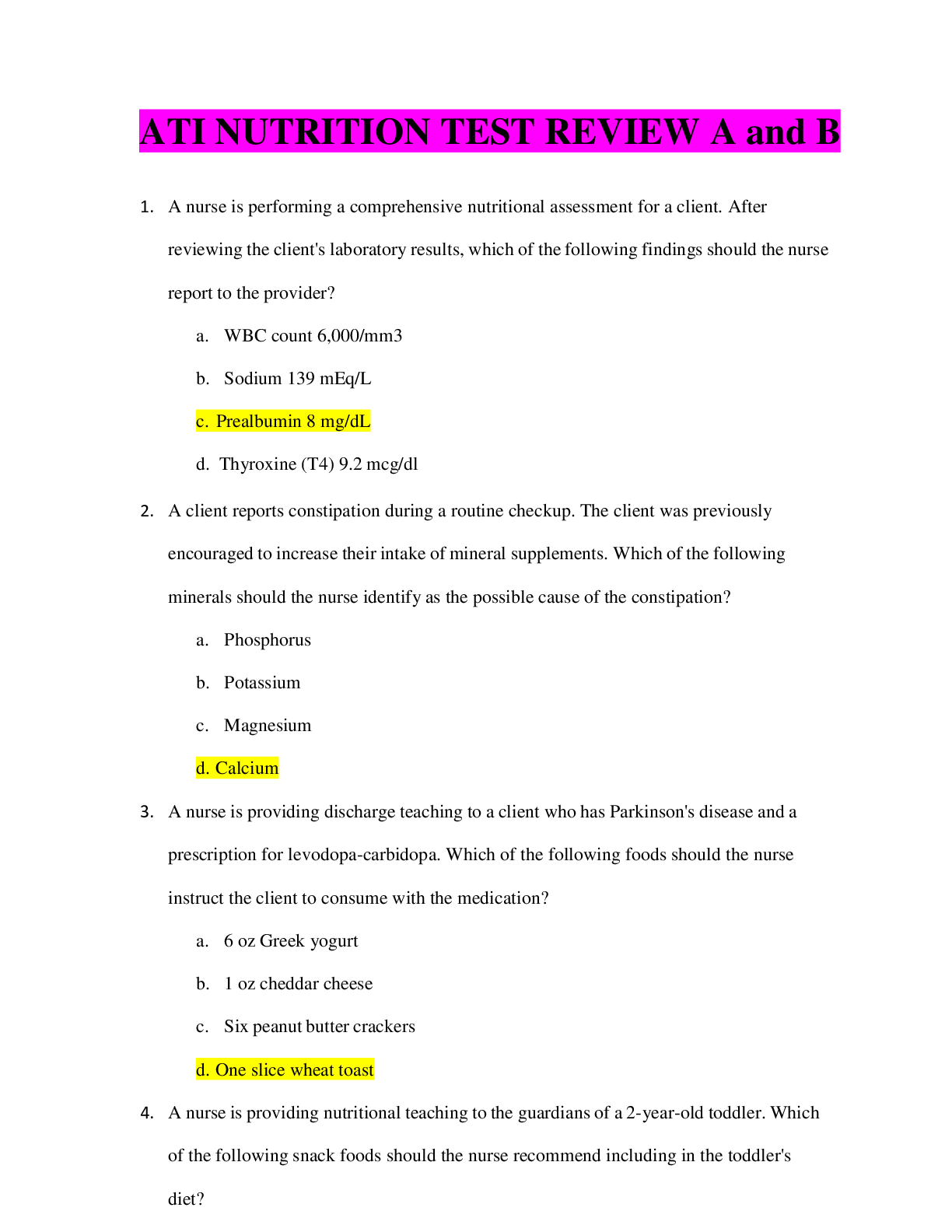
Reviews( 0 )
Document information
Connected school, study & course
About the document
Uploaded On
May 04, 2021
Number of pages
36
Written in
Additional information
This document has been written for:
Uploaded
May 04, 2021
Downloads
0
Views
201
, Latest Questions and Answers with Explanations, All Correct Study Guide, Download to Score A.png)

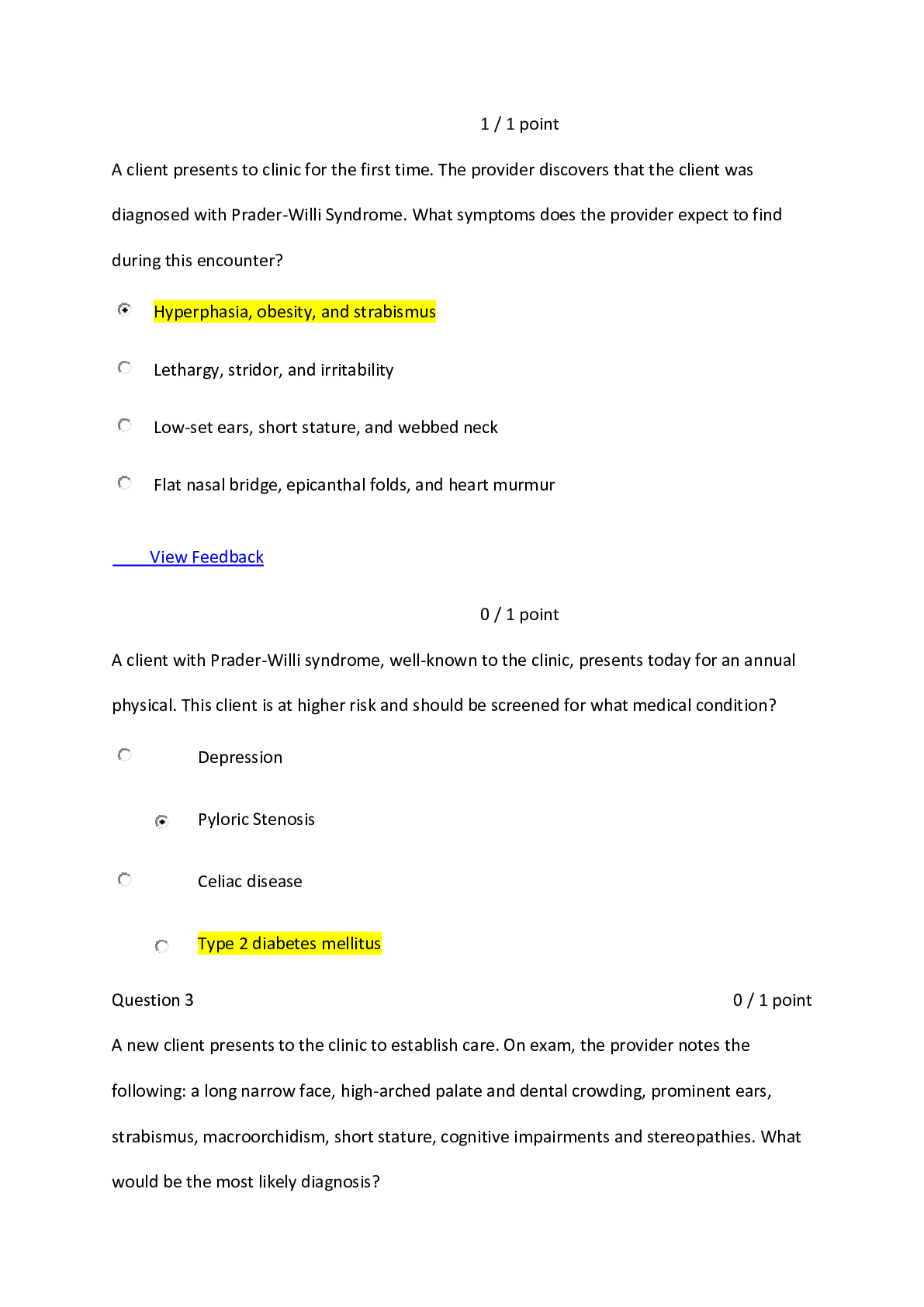
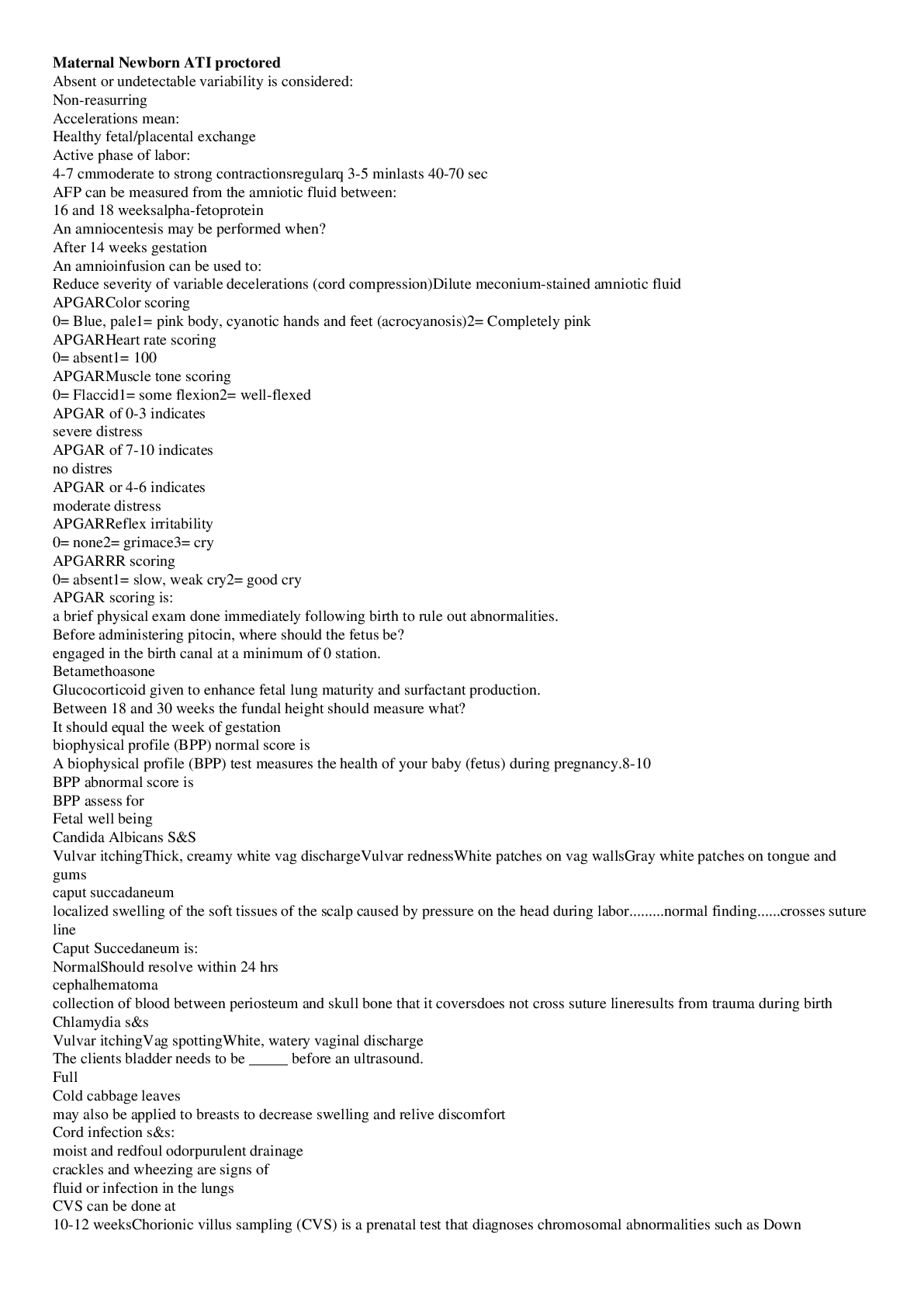
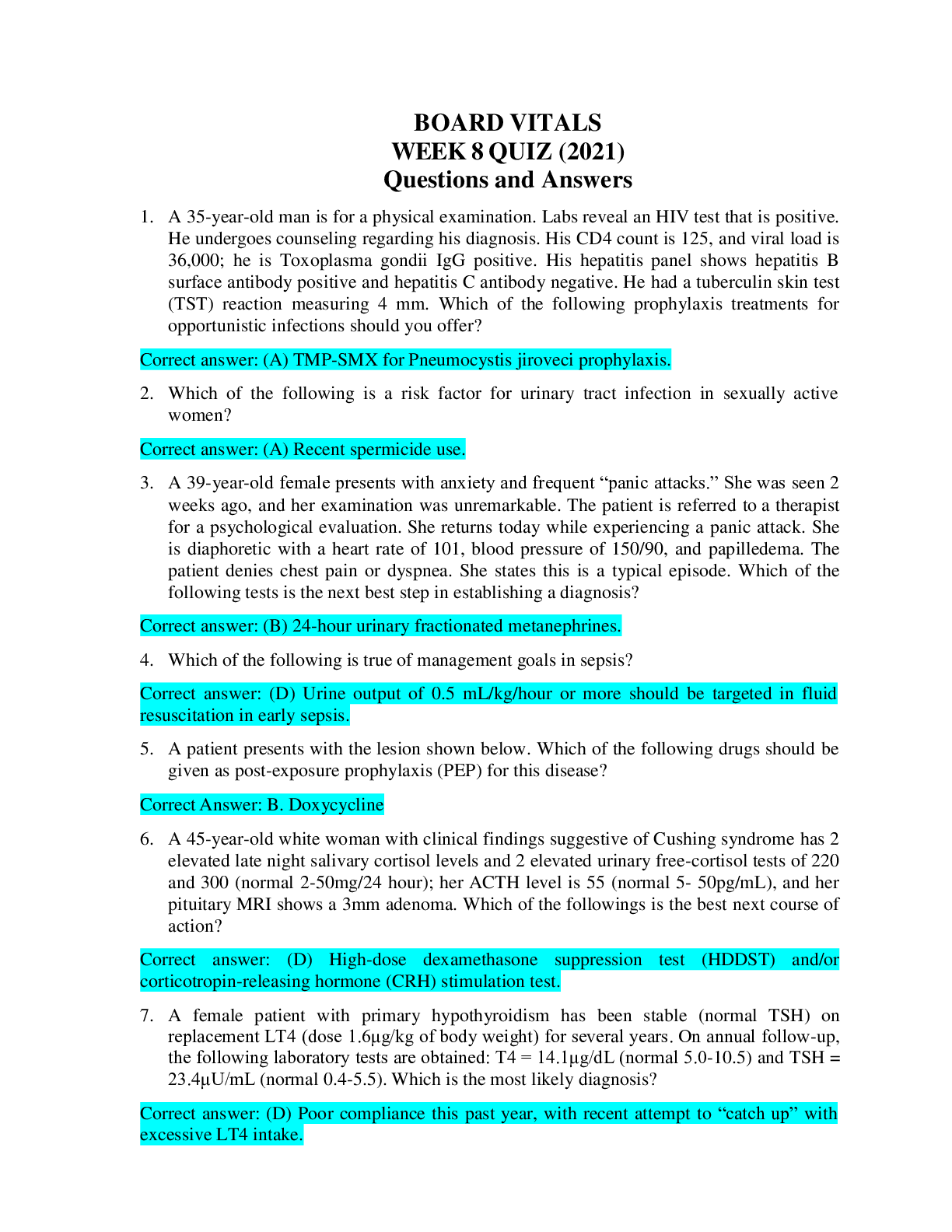

, (A Grade), Questions and Answers, All Correct Study Guide, Download to Score A.png)
 (LATEST-2021) CORRECT ANSWERS, DOWNLOAD TO SCORE A.png)
, Latest Questions and Answers with Explanations, All Correct Study Guide, Download to Score A.png)
 110 OUT OF THE 160 TOTAL QUESTIONS FOR EACH VERSION AUTHENTIC Questions and Answers (latest Update), Correct, Download to Score A.png)
, Latest Questions and Answers with Explanations, All Correct Study Guide, Download to Score A.png)
, Latest Questions and Answers with Explanations, All Correct Study Guide, Download to Score A.png)
 (Verified Answers, COMPLETE GUIDE FOR EXAM PREPARATION).png)
, Questions and Answers, All Correct Study Guide, Download to Score A.png)
 (LATEST-2021) CORRECT ANSWERS, DOWNLOAD TO SCORE A.png)
, Latest Questions and Answers with Explanations, All Correct Study Guide, Download to Score A.png)
 All Correct Answers, Download to Score A.png)
, Latest Questions and Answers with Explanations, All Correct Study Guide, Download to Score A.png)
.png)
.png)
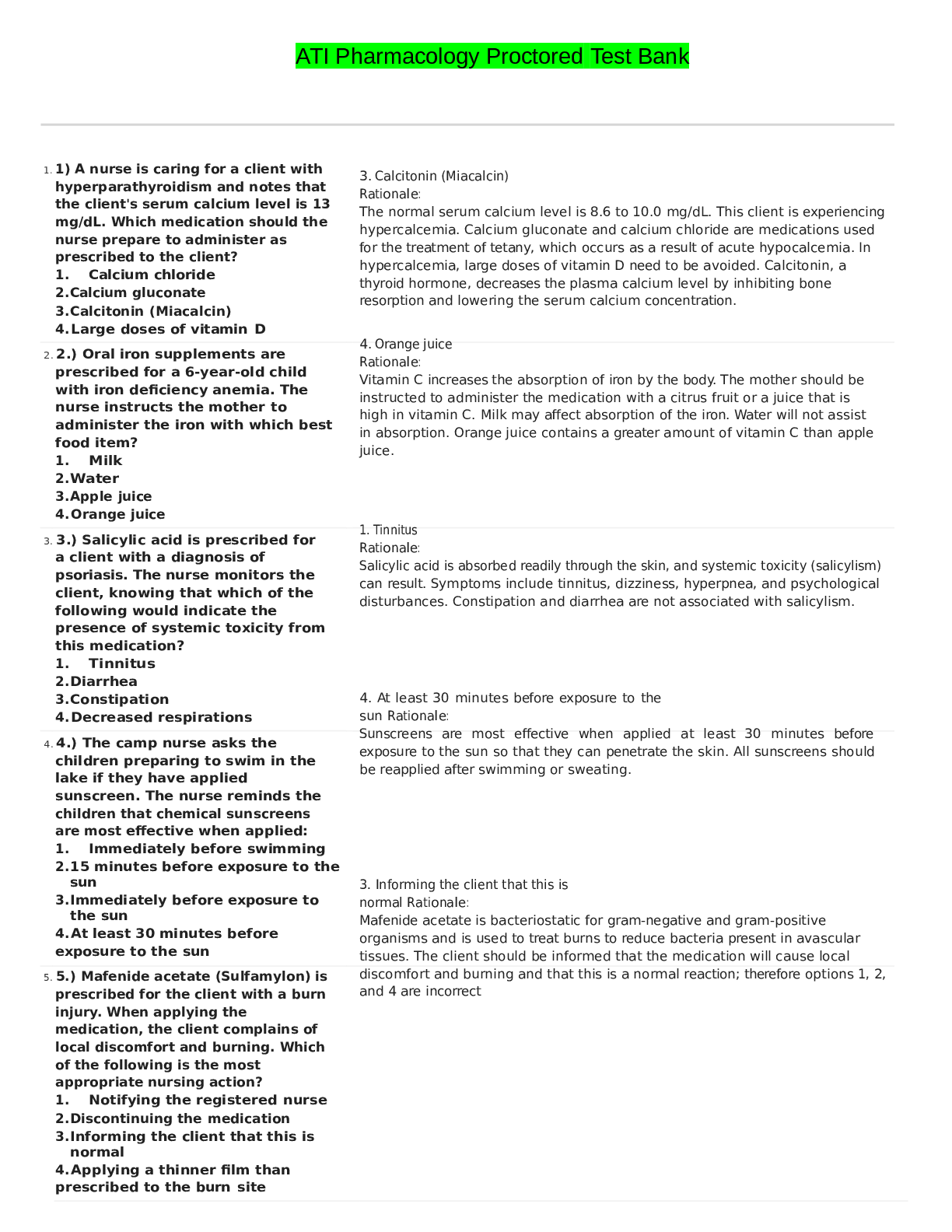
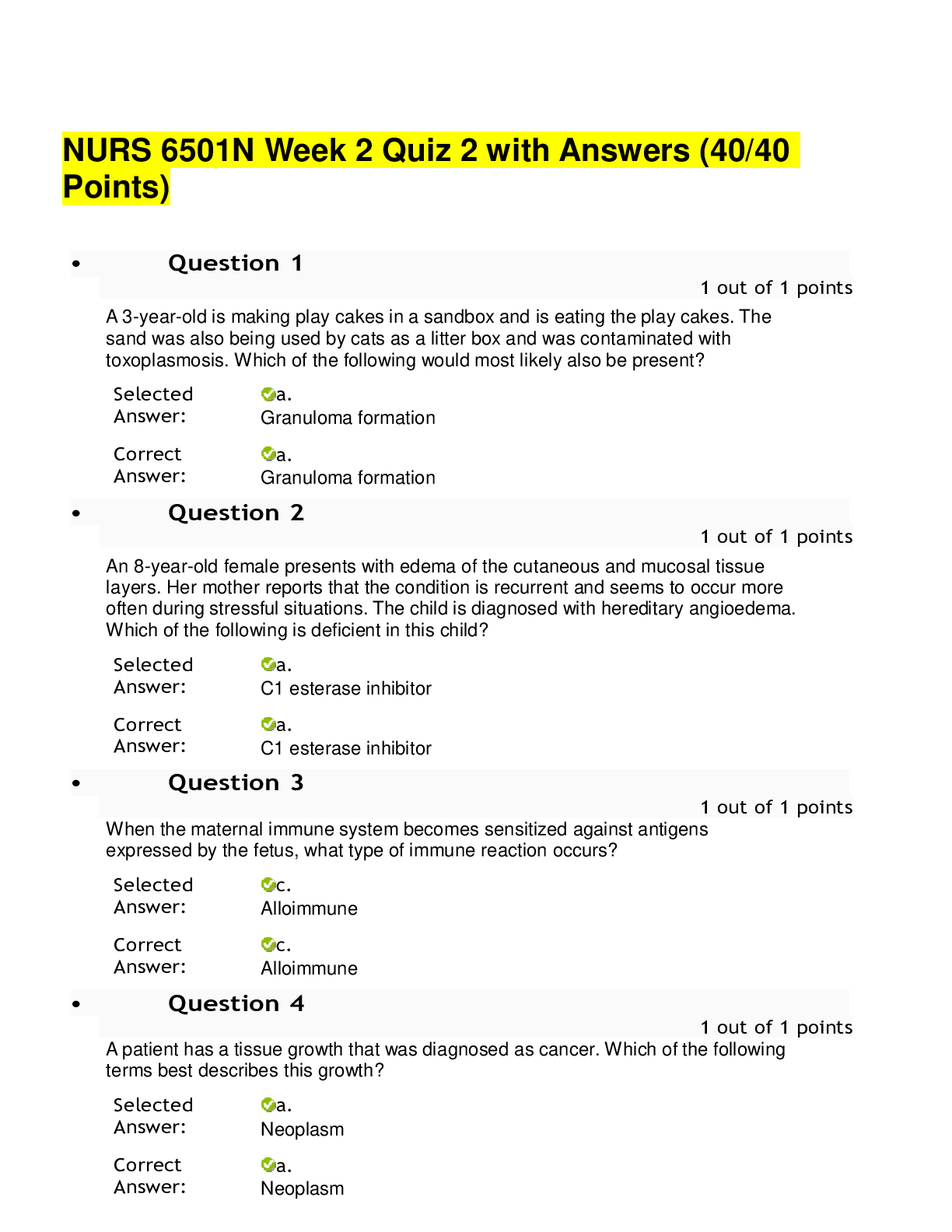
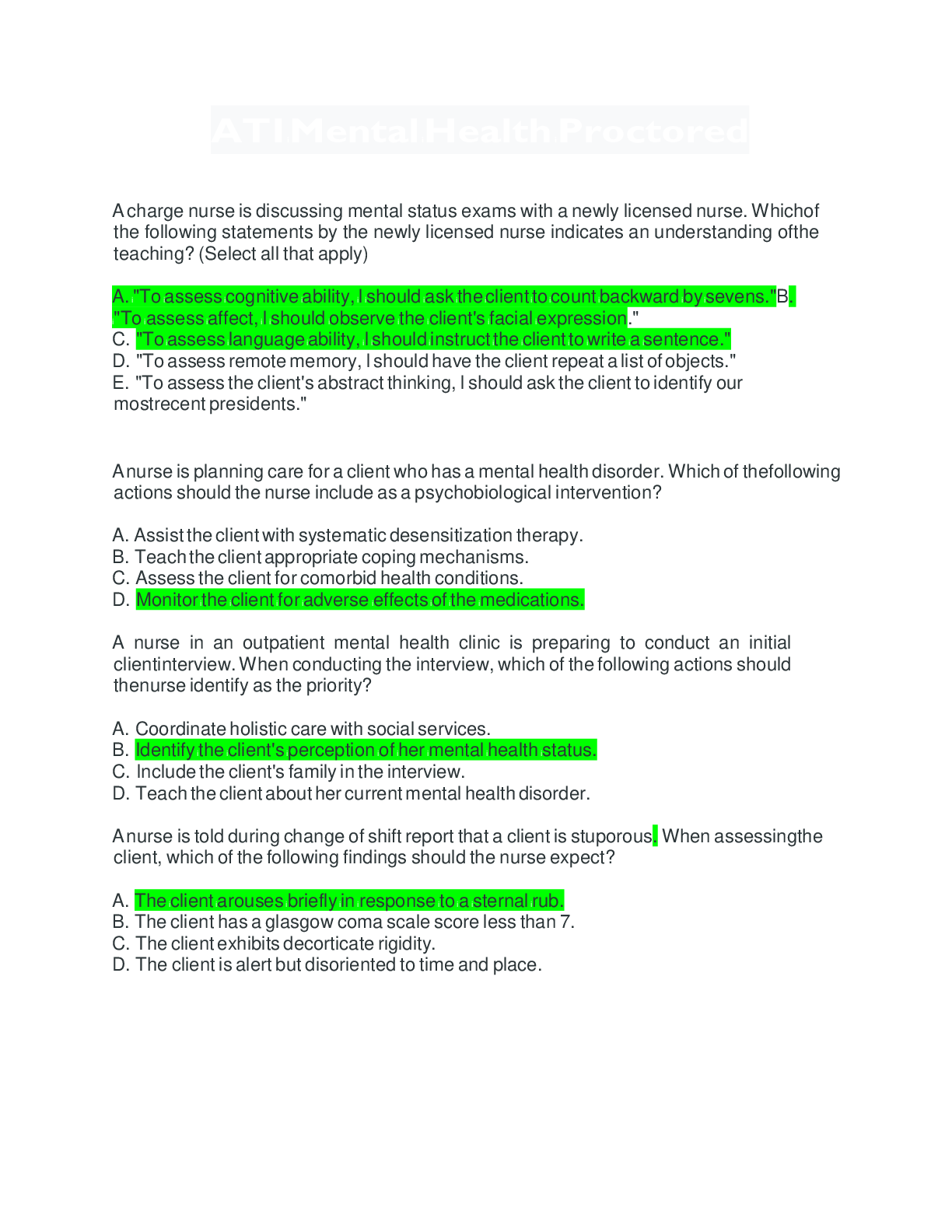
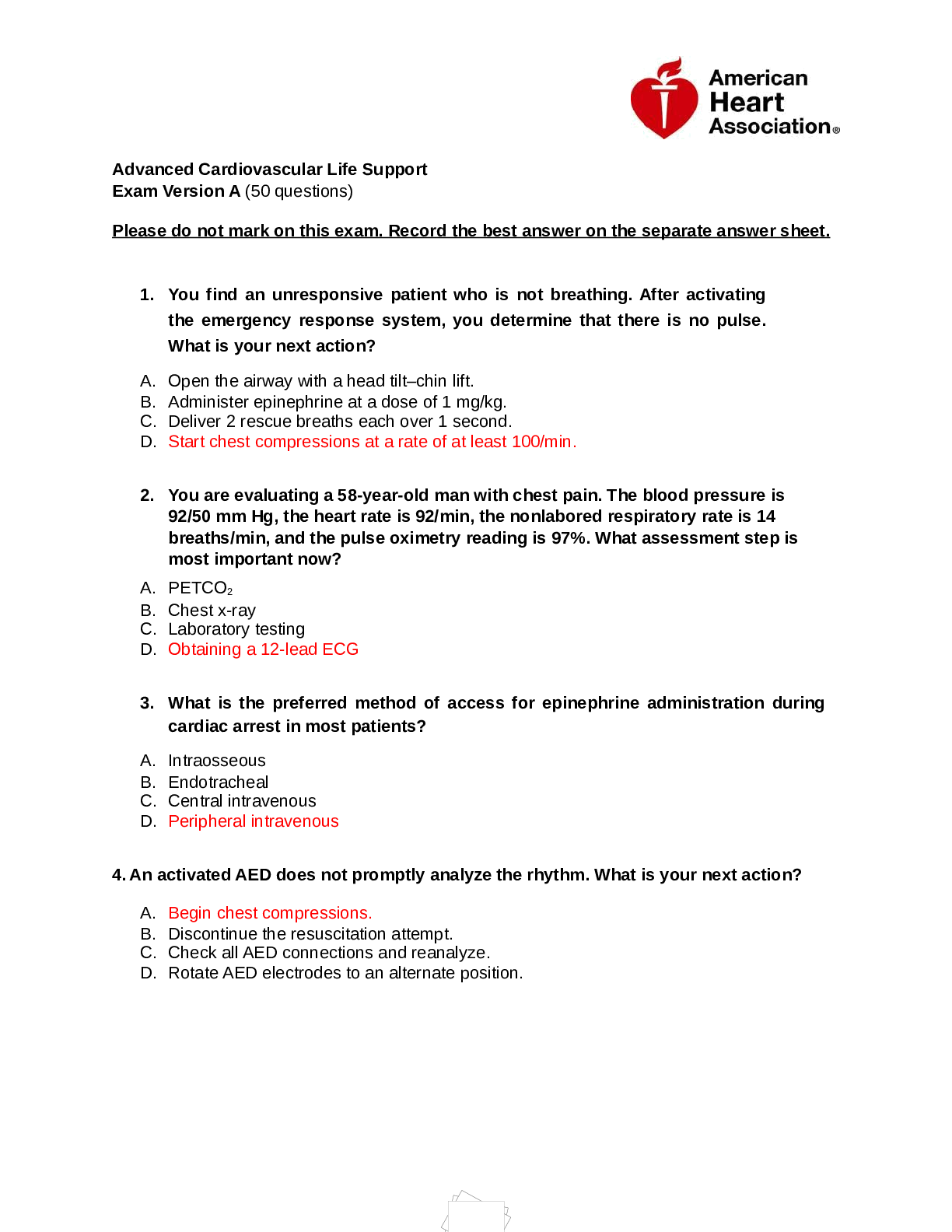
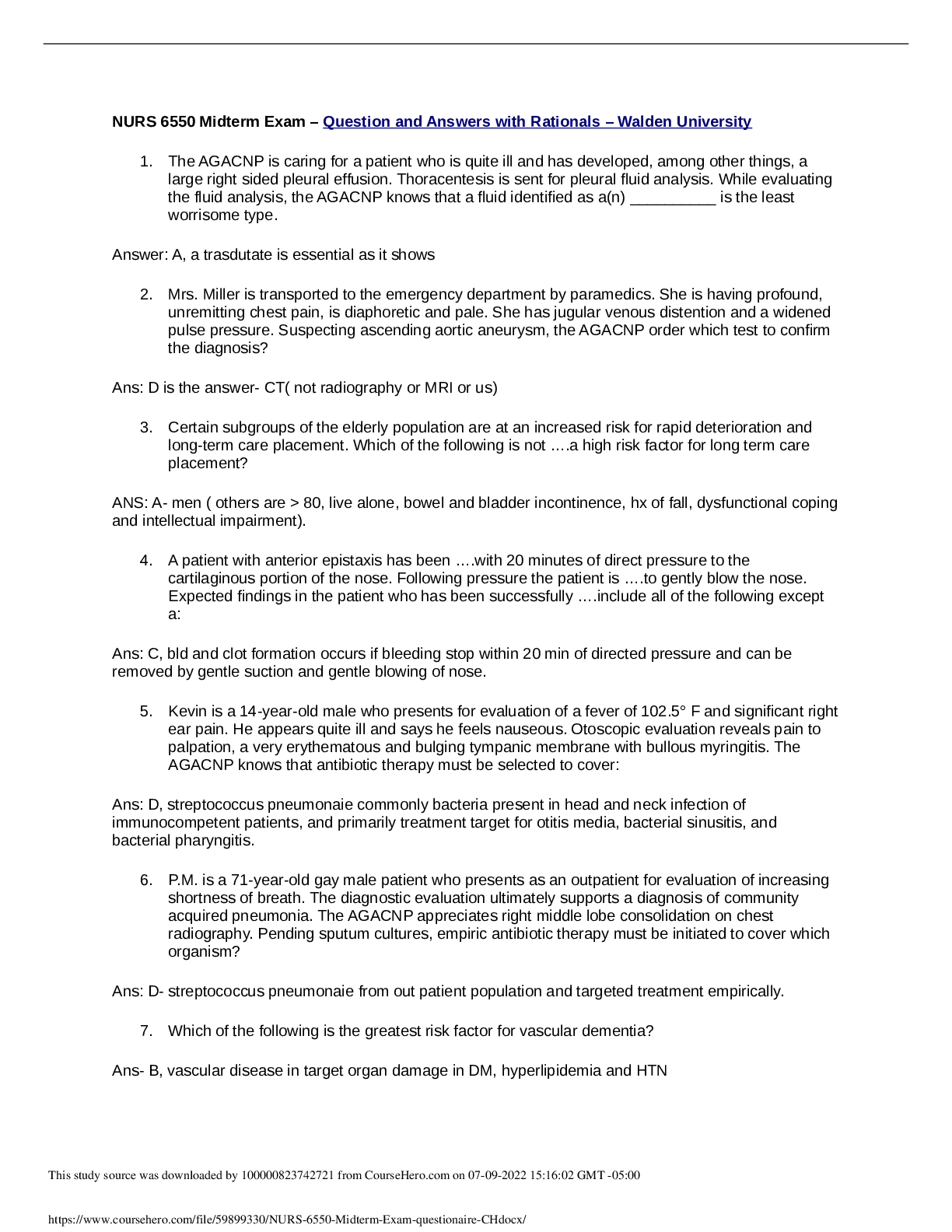
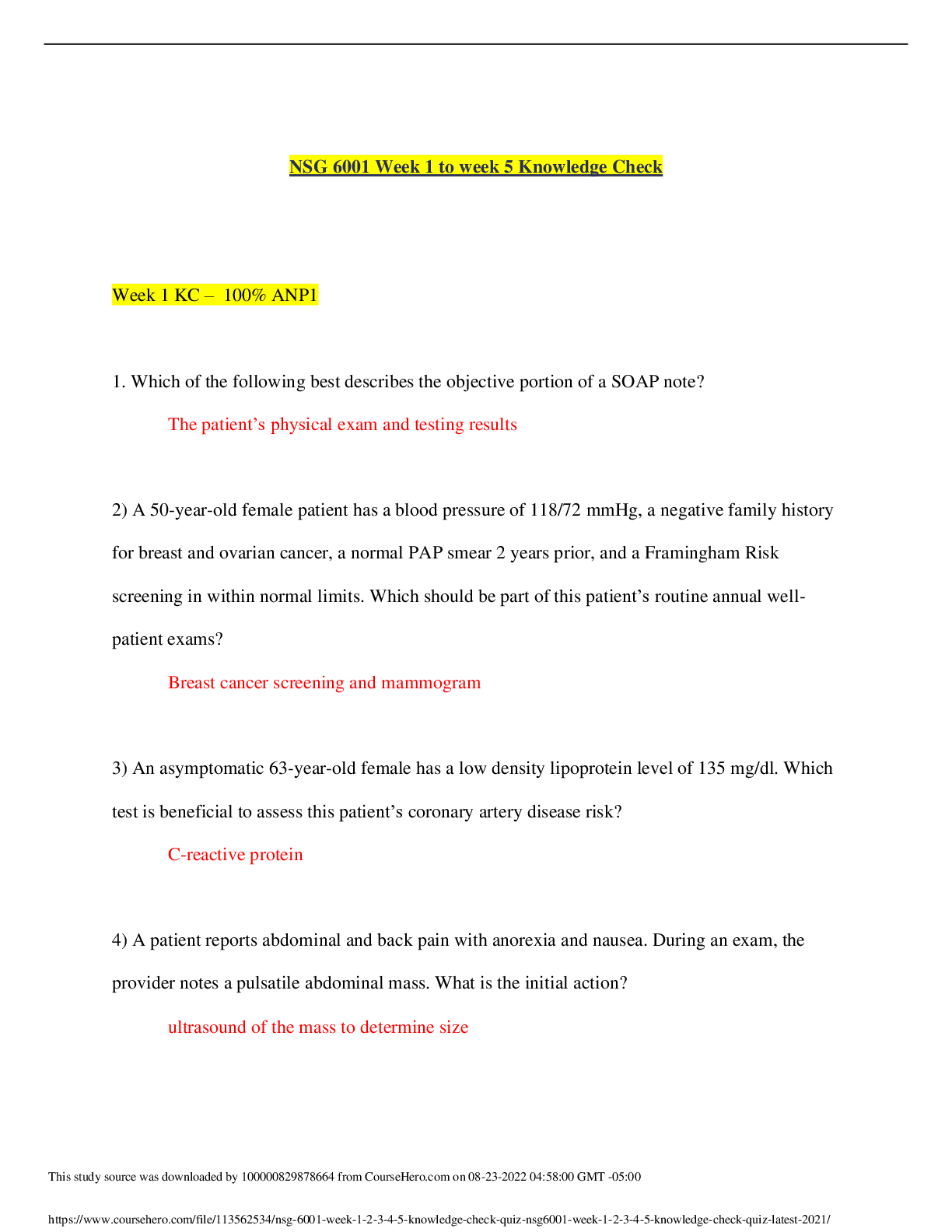
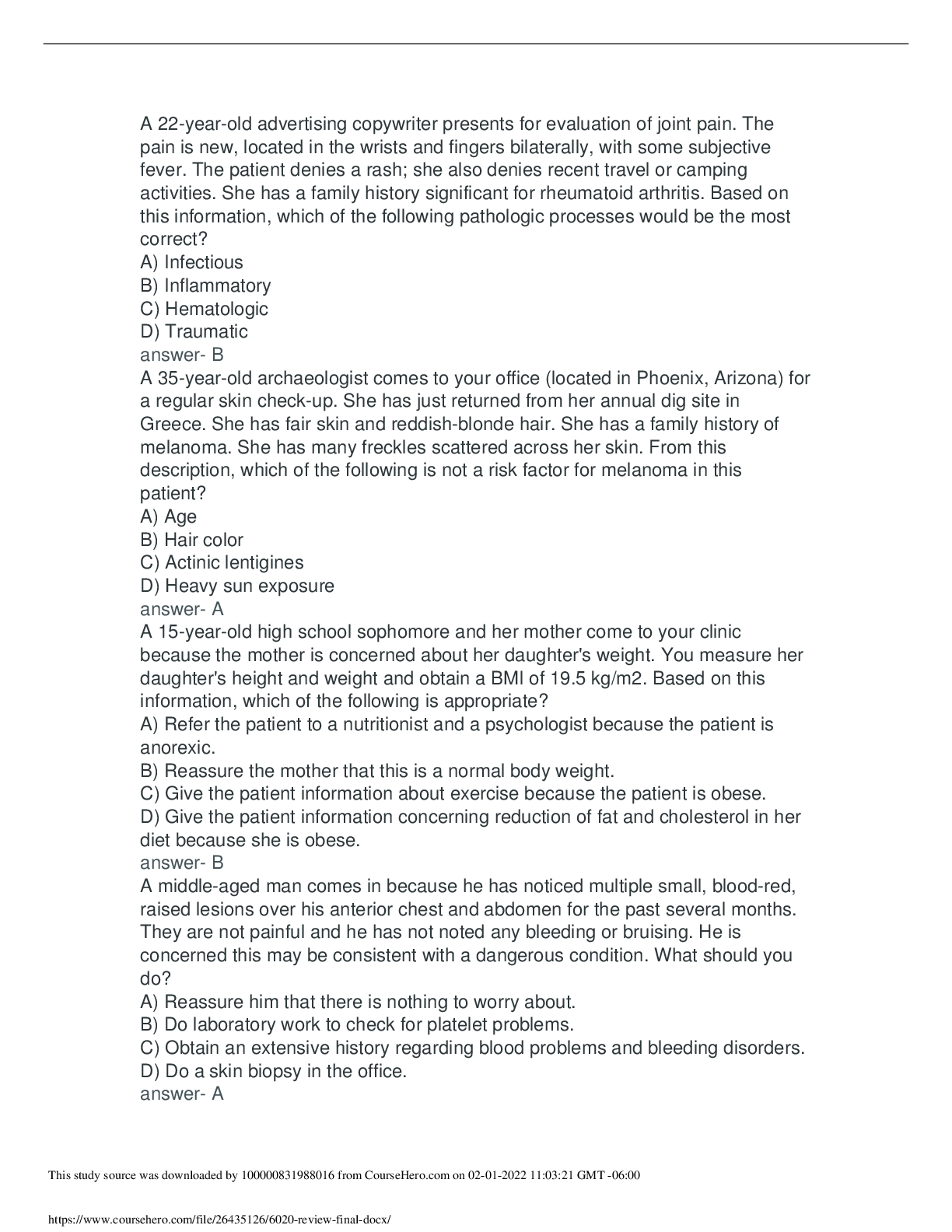
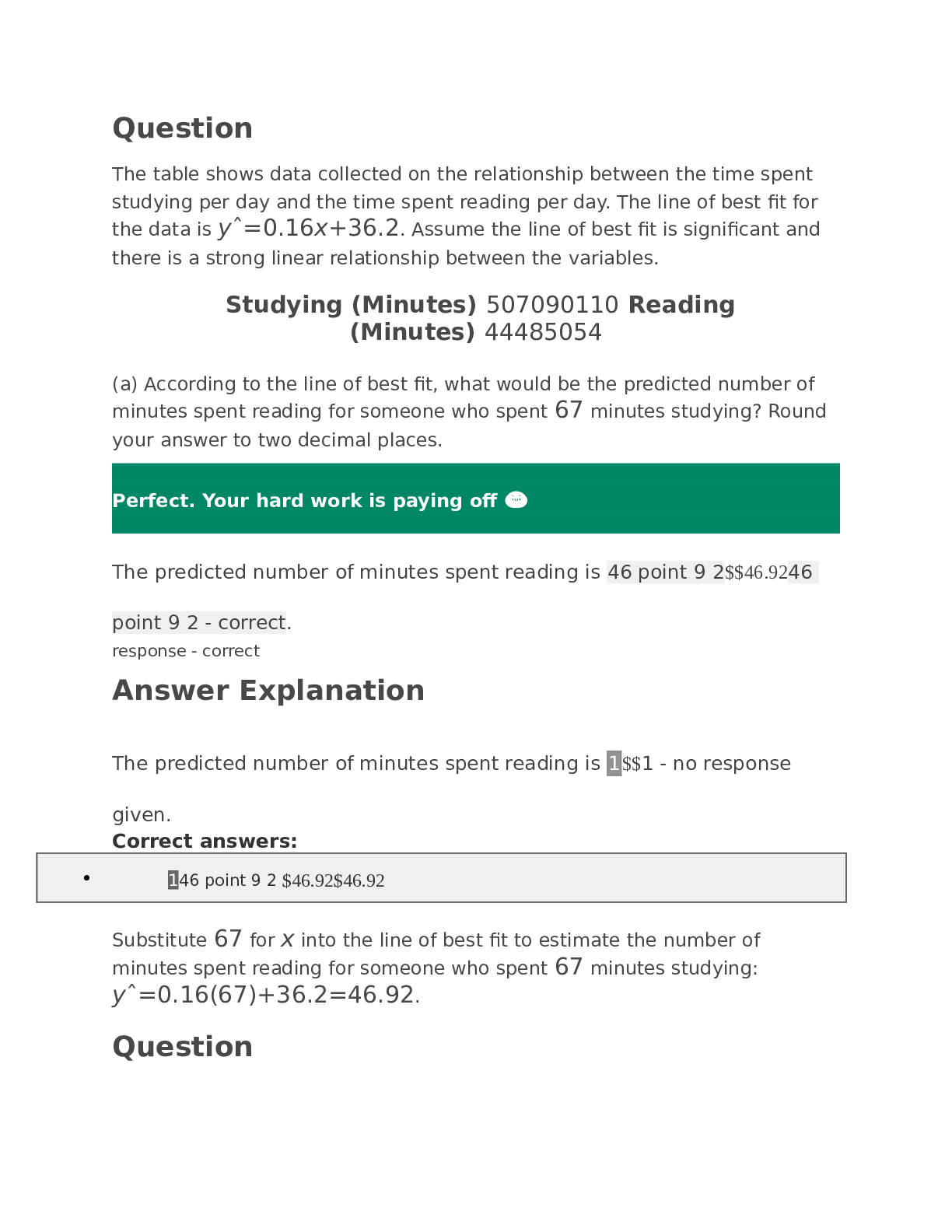
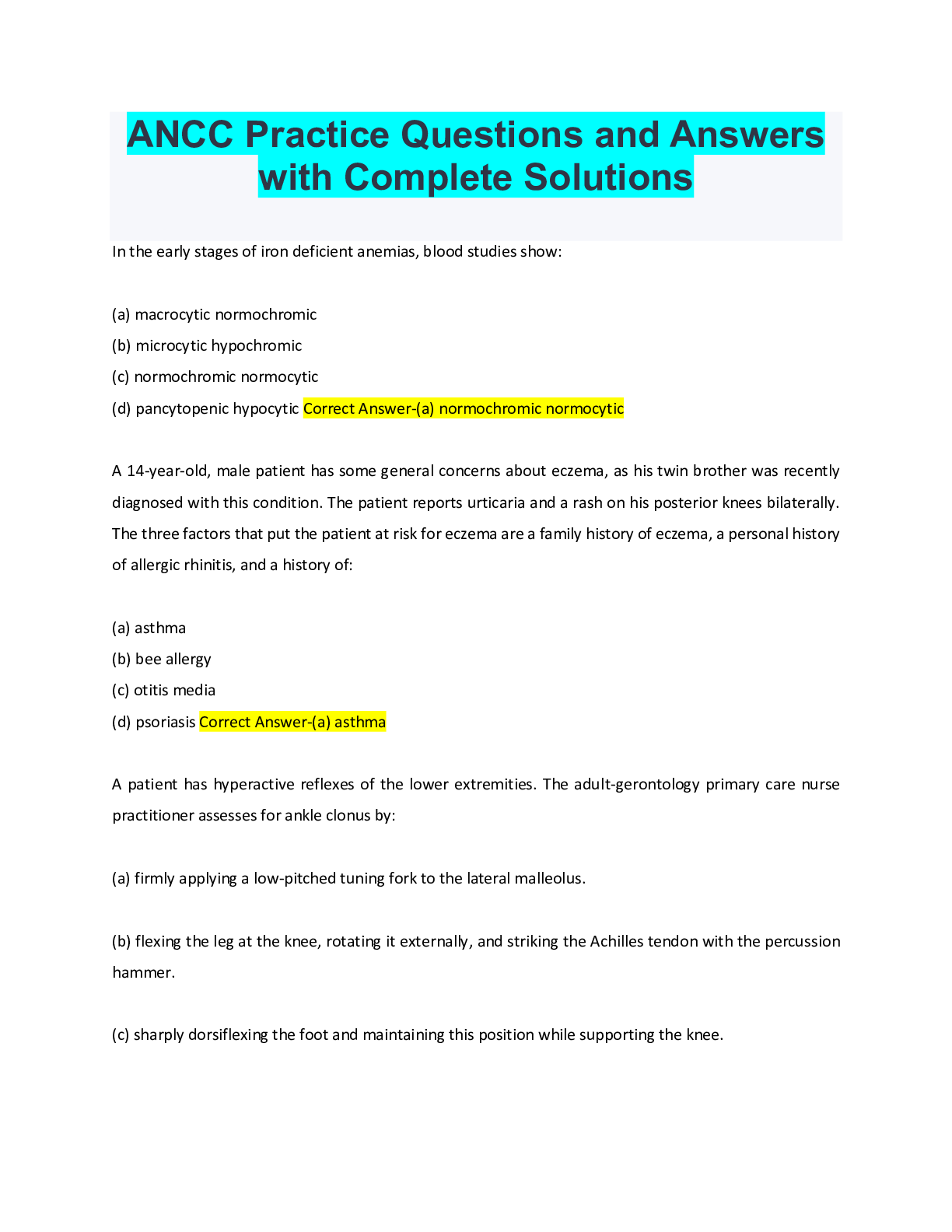
.png)
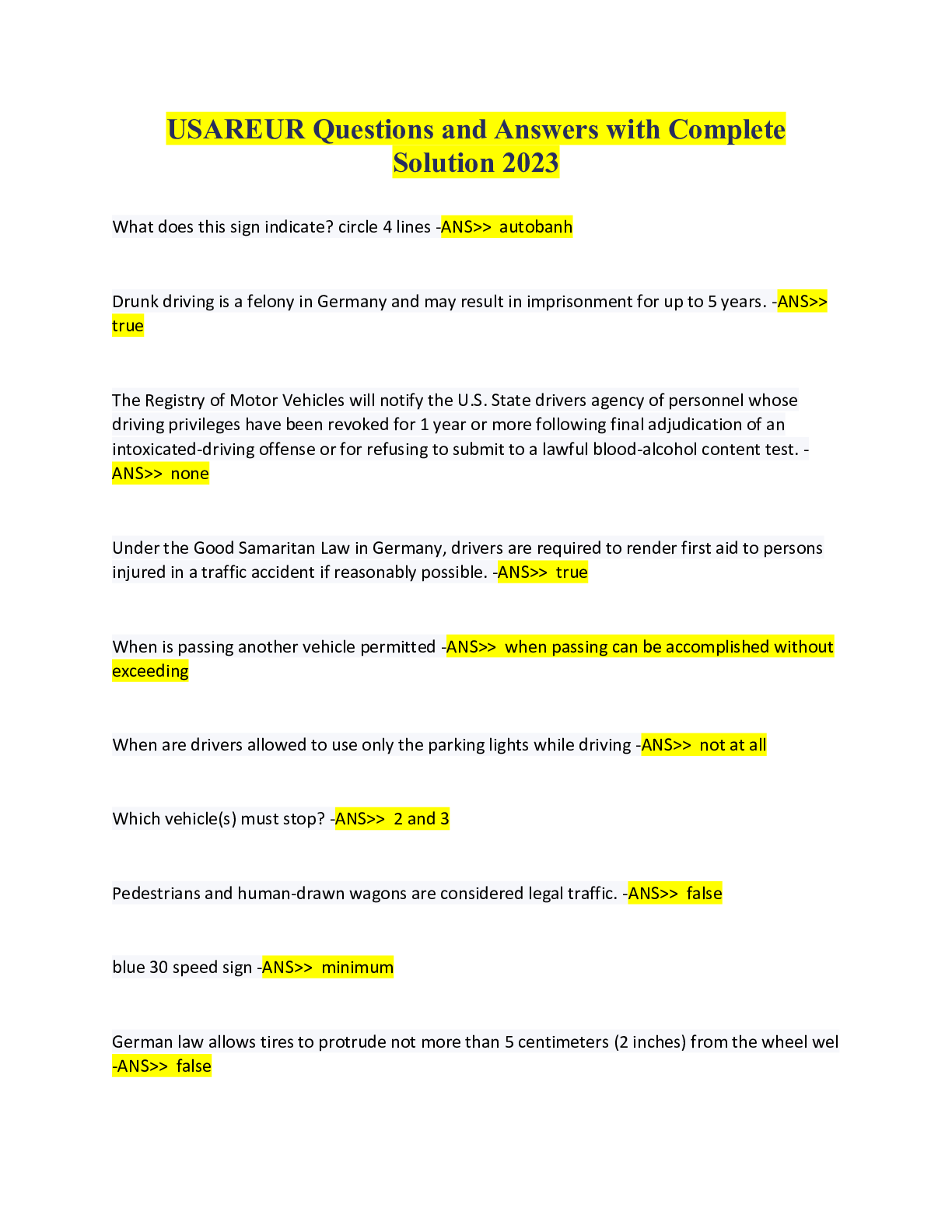
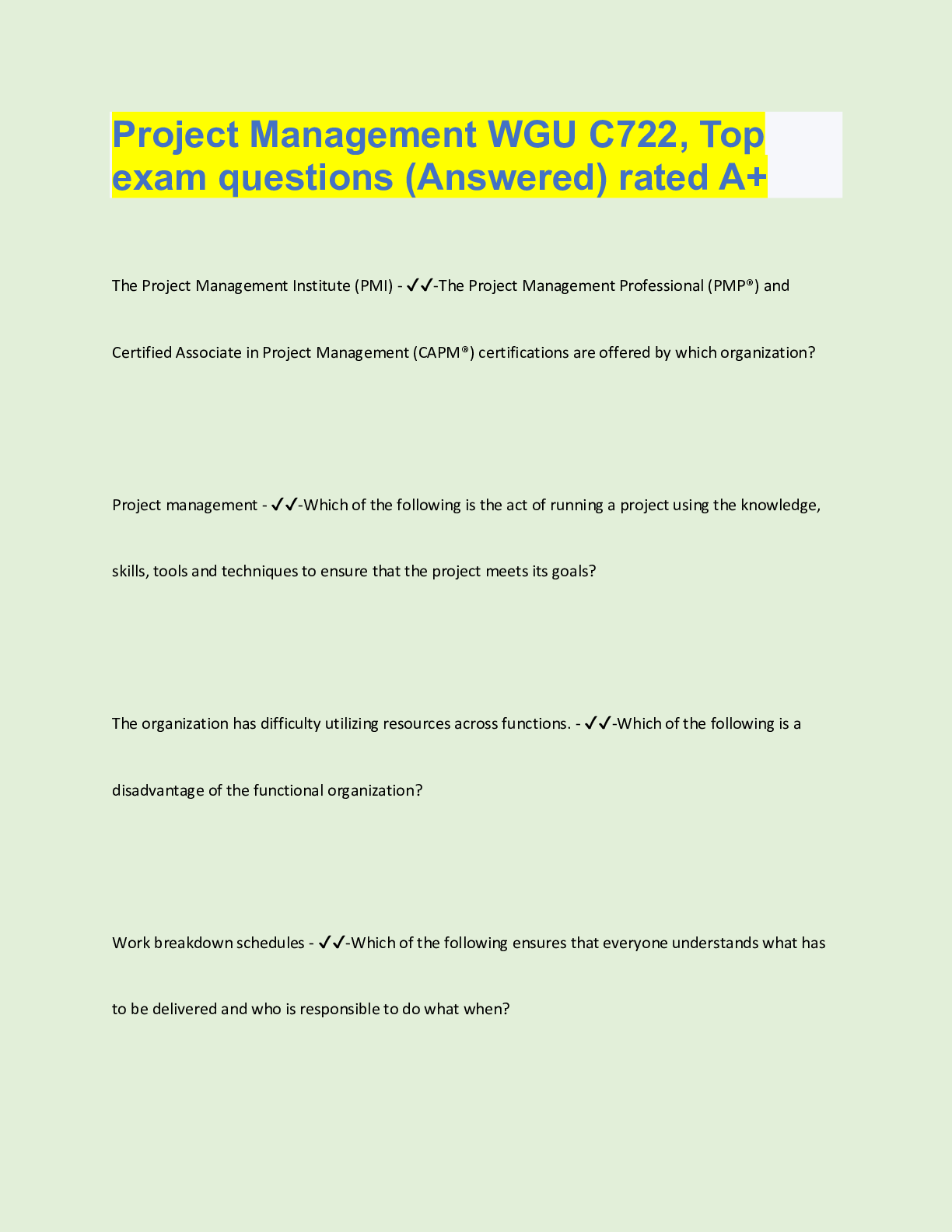

.png)
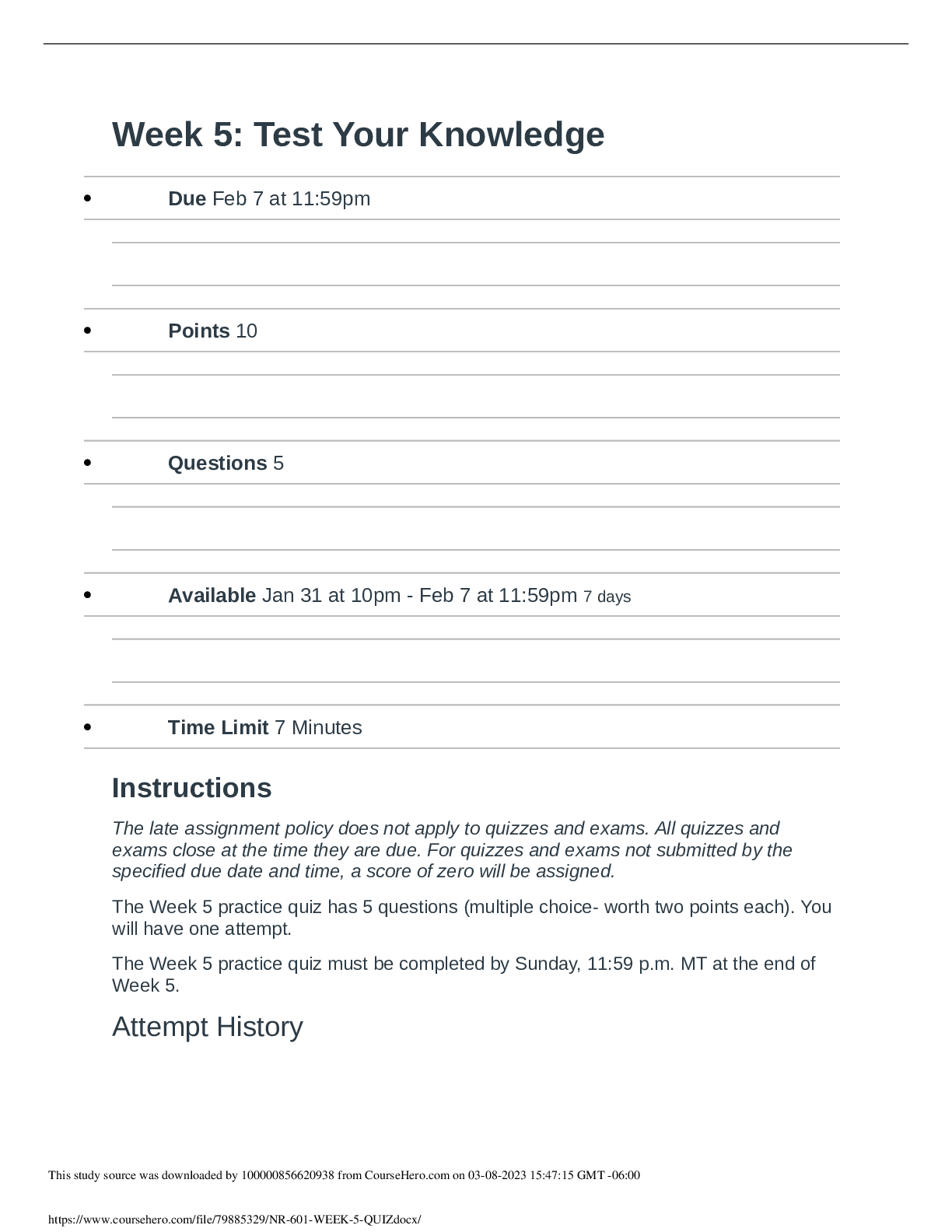
.png)

